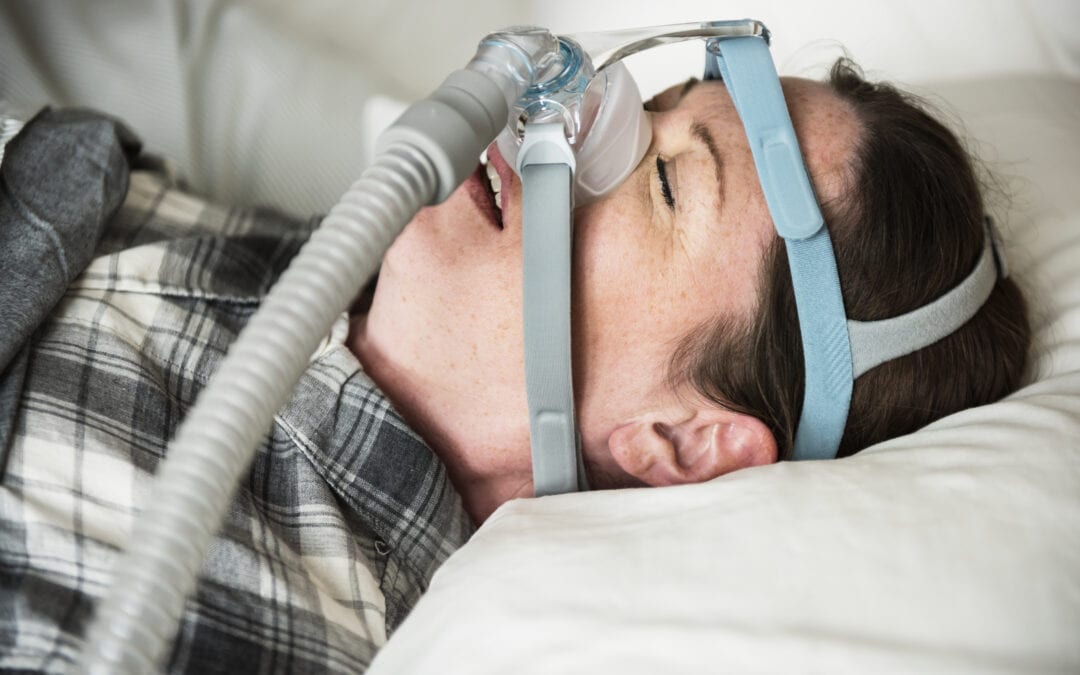For those who rely on continuous positive airway pressure therapy, also known as CPAP, you know how life-changing it can be. However, like any medical treatment, there can be some frustrating side effects. CPAP rainout is one of these side effects.
When rainout occurs, you wake up to water in your mask, condensation in your tubing, and maybe even water in your hose. This may deter you from even using your CPAP machine. Using your CPAP helps you avoid uncomfortable and disrupted sleep, so the last thing you want to do is not use your machine because it isn’t working to its best ability.
While CPAP rainout can be discouraging, several solutions are available to help you get back to enjoying a restful night’s sleep. Let’s review what CPAP rainout is and some tips for managing it to get the most out of your sleep apnea treatment.
What Causes CPAP Rainout?
CPAP rainout happens when moisture in the air is delivered through the machine and accumulates in the tubing. This causes the tubing to fill with water droplets that release into the mask, causing discomfort and disrupting your sleep. CPAP rainout is more common in winter when the temperature difference between the room and air from the machine is more significant.
Solutions for CPAP Rainout
While CPAP rainout can be annoying, there are several solutions to manage the issue and help you get the most out of your treatment. Here are some solutions for CPAP rainout.
1. Adjust the Humidifier Settings
One of the primary causes of CPAP rainout is excessive humidity levels in the air being delivered from the CPAP machine. If the humidity settings are too high, the air becomes too moist, creating condensation in the tubing. Lowering the humidity setting on your machine can reduce this moisture in the air, which minimizes the risk of rainout.
While adjusting your humidifier settings may be helpful, you must find the right balance. If the humidity settings are too low, you may experience dryness in your nose and mouth. You might need to experiment with different humidity levels until you find the right settings.
2. Insulate Your CPAP Hose
Using specially designed tubing wrappers for your CPAP hose is a great solution for CPAP rainout. Additionally, you can run the tubing under your blankets can provide extra warmth to the hose.
3. Adjust the Room Temperature
CPAP rainout is more common during the fall and winter months when the air temperature is different (from having your heat on) from the air in your tubing. Adjusting the temperature in your room can help reduce the occurrence of rainout. If the temperature in your room is kept a bit cooler at night, you’re less likely to experience condensation building up in your tubing.
4. Use a Heated CPAP Hose
Using a heated CPAP hose is an effective solution for CPAP rainout. This type of hose keeps the air warm as it travels through the tubing, which helps prevent condensation. Tubing wrappers are compatible with most CPAP machines and can be purchased from equipment providers or sleep apnea clinics.
5. Use a CPAP Machine with Auto-Adjusting Humidity
Insurance companies usually replace your CPAP mask every 90 days and cover the cost of a new CPAP machine every five years. This is helpful as upgrades and machine functionality can change significantly over five years.
Some newer CPAP machines on the market have auto-adjusting humidity settings that can help prevent rainout. These machines use sensors to monitor the temperature and humidity levels in the room and adjust the humidity settings on your machine as needed, preventing the air from becoming too moist and avoiding rainout.
6. Move Your CPAP Machine
It can be helpful to consider the placement of your CPAP machine. Placing the machine at a lower than your mask can help prevent accumulating condensation in the tubing.
If your CPAP machine is currently on a bedside table with the tubing draining down into your mask, try to move it to a lower surface so the tubing and air flow upwards instead. This will help condensation that does start to form flow back down to the humidifier and not into your mask. Use gravity to your advantage and reduce the risk of CPAP rainout so you can get better sleep!
Effective CPAP Treatment With DreamZz Sleep Center
CPAP rainout is a frustrating side effect when using your CPAP machine for sleep apnea. However, with the abovementioned solutions, you can effectively manage this problem and get the most out of your treatment.
If you continue to have these problems after making adjustments, speak to your sleep apnea doctor or clinic for further guidance. Remember, getting a good night’s rest is crucial for overall health and well-being, so don’t let CPAP rainout get in the way of treating your sleep apnea effectively.
At DreamZz Sleep Center, we want to ensure you return to a healthy, good night of sleep. So we start treatment as soon as possible and consultations and sleep studies within one or two weeks of your initial inquiry. We’re here to help you have restful, undisturbed sleep to improve your health.
Contact us today to book an appointment.


Recent Comments